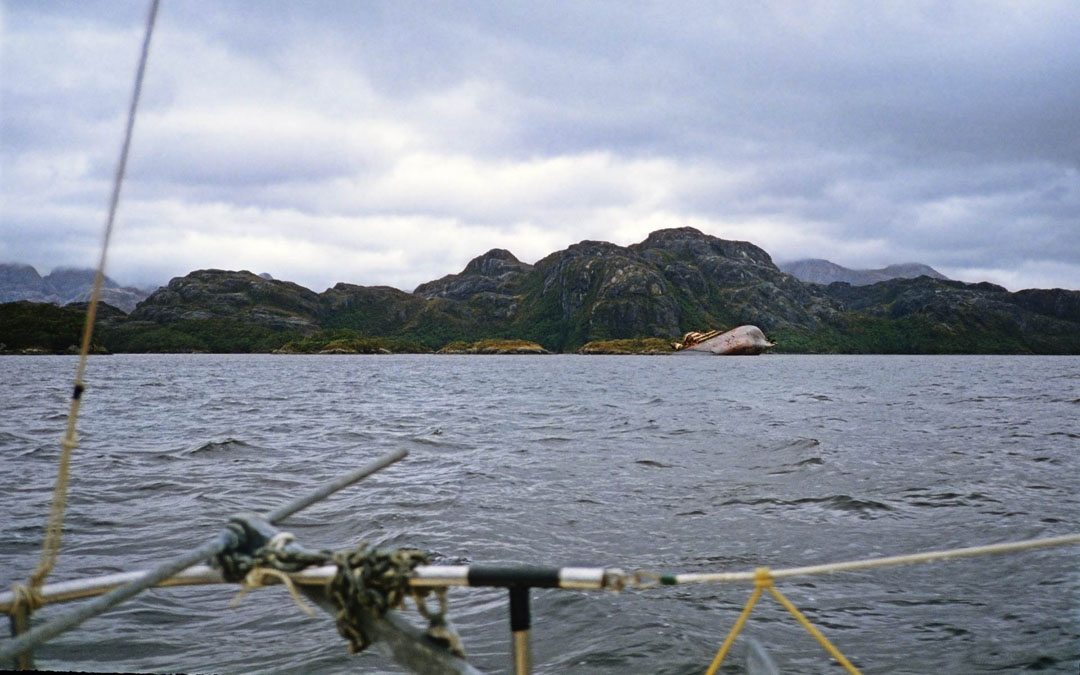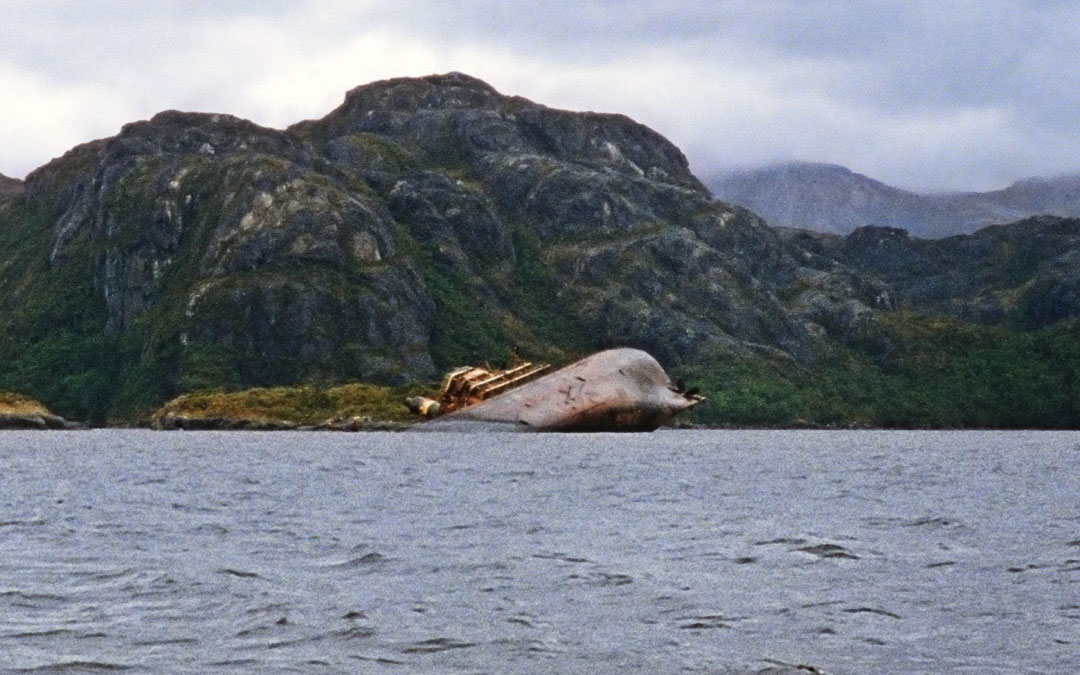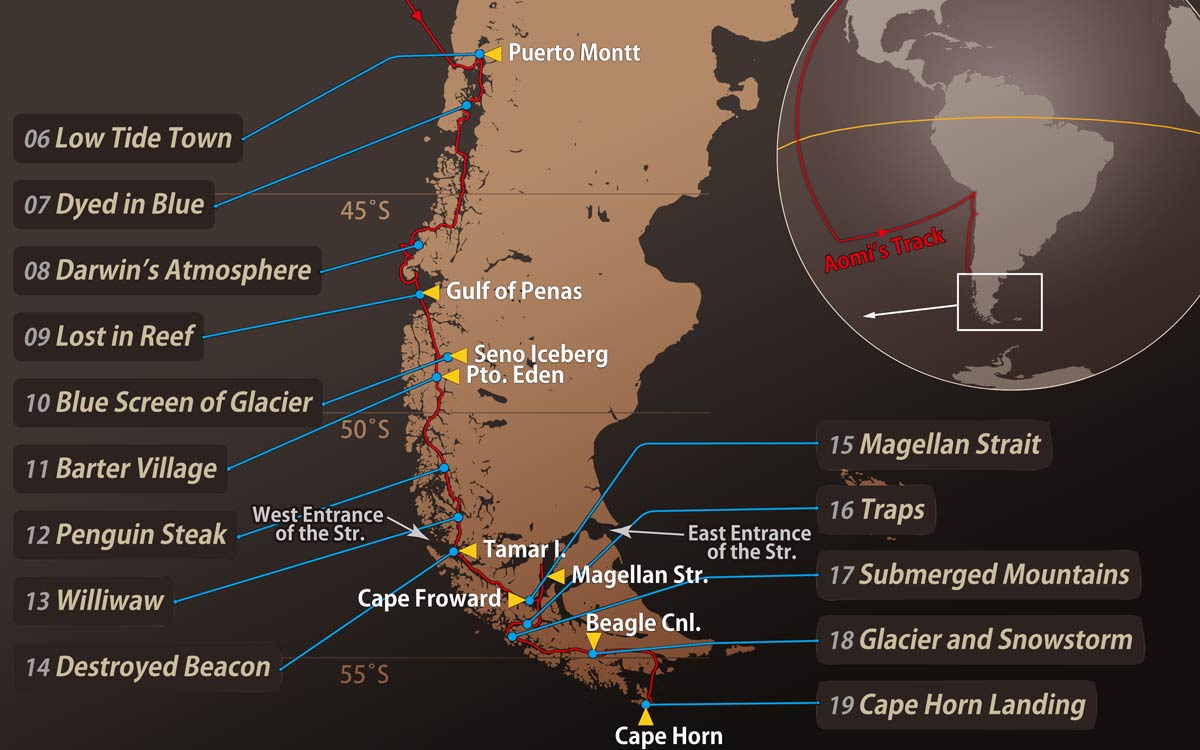13. Williwaw
Sometimes, we read or hear about the tremendous power of a person, a work of art, a natural disaster, or the latest scientific technology. But perhaps only when we encounter it firsthand can we truly feel its full force.
One such force is the fierce winds of the Patagonian region.

Anything unexpected can happen in the remote and unexplored area of the Patagonian Archipelago in Chile.
Here, everything is beyond our comprehension, especially the raging Williwaws, fierce winds intensified by the fjord-like, complex terrain.
My fifth encounter with the Williwaw occurs at Isthmus Bay, at 52° south latitude.
It is a narrow, 3‑kilometer-long inlet surrounded by rugged, rain-drenched, purple mountains that rise eerily, as if to threaten those who approach. Enclosed by these mountains, the inlet presents a desolate and forbidding sight, as if it lies at the end of the world.
Although strong winds blow between the densely packed islands, they do not reach inside this inlet. The surrounding steep mountains act as a screen to keep the wind out. The US Navy’s Sailing Directions describe this place as “one of the best anchorages in the channels.”
“I can rest easy tonight in this safe anchorage.”
After a day of sailing, Aomi reaches the quiet inlet and sets down her two anchors.
A few mornings later, still anchored there and awaiting better weather, a fierce wind begins to blow in from the mouth of the inlet. Aomi’s mast howls eerily with a low-frequency sound. The sails, lowered to the deck, flap as if about to tear.
I quickly run out of the cabin to secure the flapping sails with ropes, careful not to be swept away myself by the strong wind. Rushing back to the cabin, which repeatedly tilts violently under gusts of the Williwaw, I look out the window.
The sea is already whipped into whitecaps. Along the shore, the low trees bend so severely they could snap at any moment. Whenever a gust surges through the inlet, it scatters the birds on the water, rolling them like spinning wheels and sending sprays into the air. The dinghy tied to Aomi’s stern is repeatedly hurled into the air and drops back down, only to finally disappear beneath the water.
Should the wind strengthen further, the anchor might fail, and Aomi could be swept away. The wind’s overwhelming roar, equal to that of a jet fighter, leaves me unable to think. The turbulence shaking Aomi’s hull is also so fierce that my body trembles with it. I must act quickly, or the 5‑millimeter-thick hull might suffer fatigue failure and break, causing Aomi to sink.
However, all I can do is cover myself with a blanket and shiver, lying on my berth. The loud noise, the vibrations, and the overwhelming fear paralyze me, leaving me unable to act.
The winds in this region are undoubtedly beyond our comprehension. Data from the meteorological observatory on Evangelistas Island show that gale-force winds (force 8) occur once or twice a week. In fact, the barometer in Aomi’s cabin dropped to a typhoon level of 974 hectopascals. I have come to an incredible place.
But no storm, no misfortune, and no hardship lasts forever. When the fierce winds of the Williwaw subside, Aomi leaves the inlets and begins to sail through the gaps between the islands. As heavy rain obscures the landscape, I rely on the compass, the depth sounder, and perhaps even my sixth sense to guide Aomi through the gray-painted world. Then, as the rain subsides and the gray curtain lifts, strange purple rock formations appear, stretching like endless pictures on either side of the waterway. The deep purple hue is so vivid it burns into my vision.
On days when rain is scarce, sunlight pierces through small, hole-like gaps in the dense clouds. It casts spotlight-like beams onto the islands, which glow luminously against the dim sea. The previously dark purple rocks now shimmer in shades of pink and sometimes gold under the shifting light. Watching these magical islands change colors under this dynamic illumination is like witnessing a dream.
Looking up at the mountains, the overflowing glacier itself seems to radiate a green fluorescent light in the dim, cloudy sky. On the soul-stirring deep purple cliffs on either side of Aomi, pure white waterfalls cascade like tangled threads or flowing somen noodles. Every time I witness this otherworldly scene, a new surprise fills my heart.
But it is strange; one of the small islands ahead appears unnaturally painted in red. I check the charts and discover that it is a shipwreck.
Peering through my binoculars, I see a four-story ship tipped over, with its stern propeller exposed. Did the Williwaw cause this? What happened to this large ship, even though it was manned by a well-trained crew and equipped with sophisticated instruments?
Can the small sailboat Aomi navigate safely to the southern tip of South America, Cape Horn?


Hi! Any questions or suggestions about the content are greatly appreciated.
I’d also love writing tips from native English speakers. Since English isn’t my first language, if you notice any awkward phrases or anything that seems off, please let me know.
Thank you!
E-mail